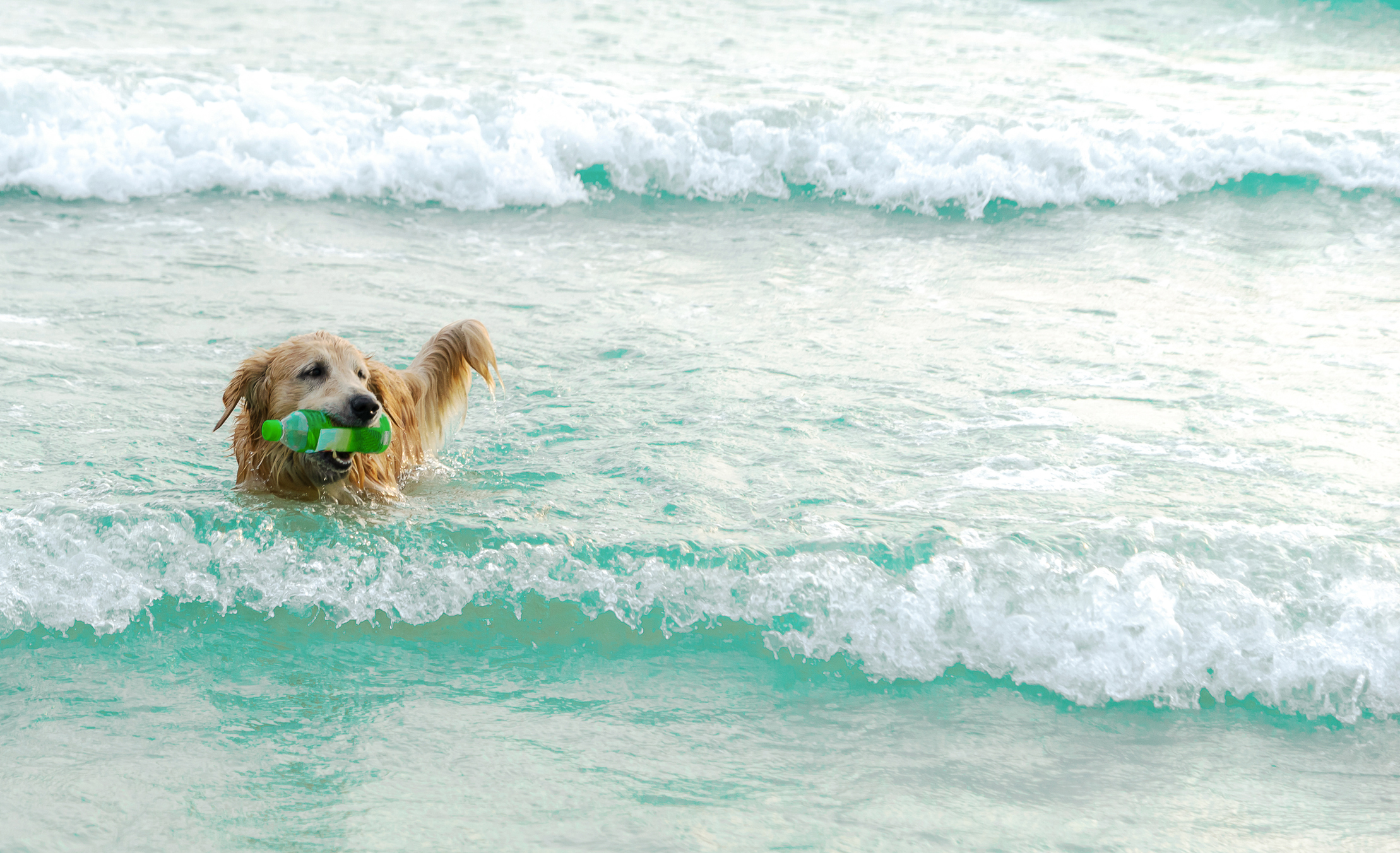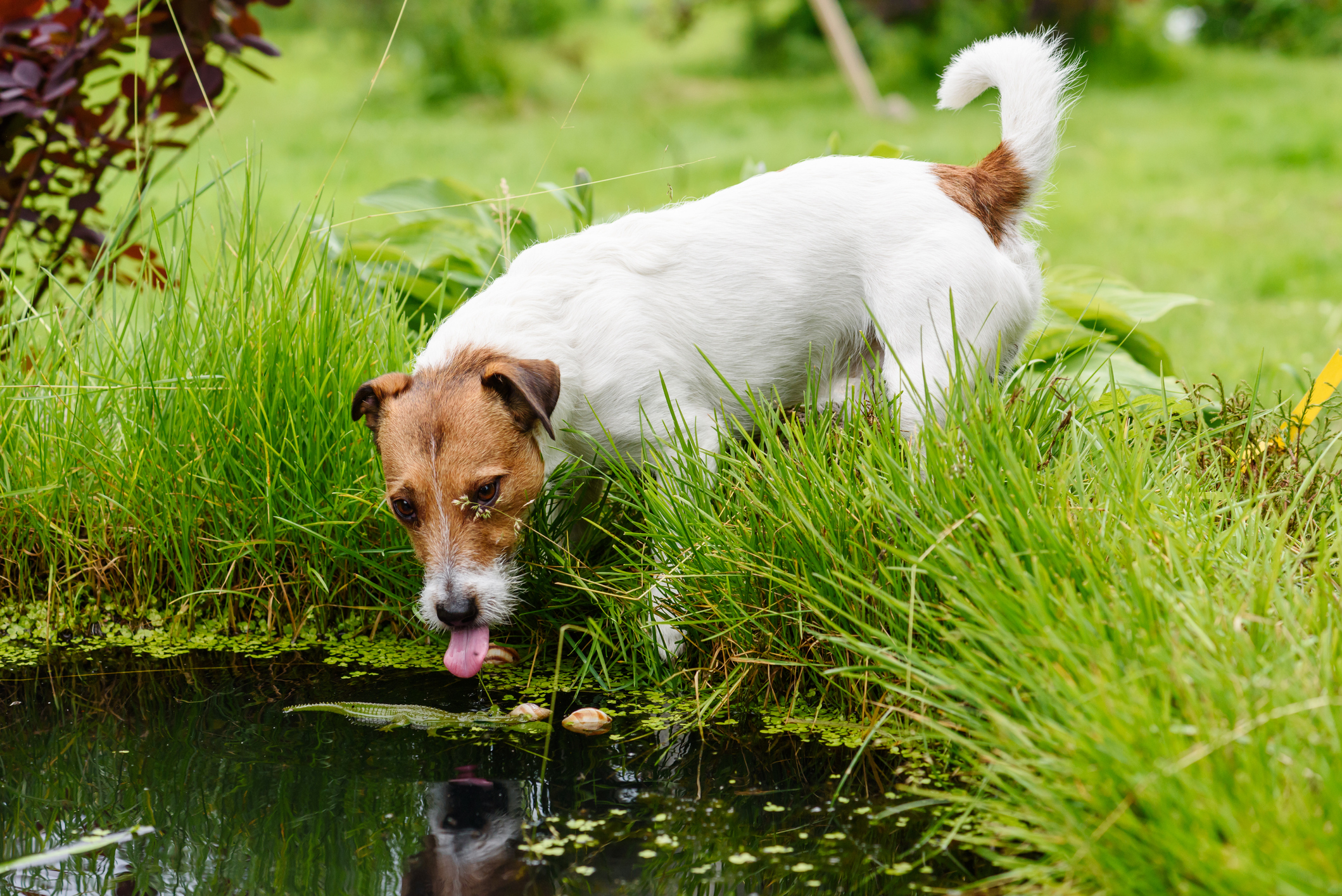
6 Reasons to Be Cautious with Your Pets Around Outdoor Water
On warm, summer days, many pet owners like to let their pups take a dive in a nearby body of water to splash around and cool off. Although this can be lots of fun for your furry friend, not all bodies of water are safe for pets to swim in. A number of potential risks await in these water features and could cause your pet harm if you’re not careful.
Whether you’re headed to a nearby stream, lake or oceanfront, stay vigilant about these six water-related threats to keep your pup safe.

- Waves and currents: Some of the biggest water safety threats lurk in moving bodies of water like rivers and oceans. Things like waves or, worse, unseen currents can sweep even large dogs away without warning. If your pet is not a strong swimmer, being pulled in by a current or wave could have fatal consequences. However, even strong swimmers could become overwhelmed in fast-moving water, being pulled away from you and potentially getting injured in the process. Always monitor the state of the water your pet goes near and don’t let them swim in fast-moving rivers or choppy waters.
- Rocks and sharp edges: Other often-overlooked dangers in natural bodies of water are rocks and sharp edges that could cut or scrape your dog upon contact. These could be resting on the bottom of a shallow lake or river where your dog will walk or along the sides, where your dog might bump or swim into. While many dogs are agile on land, slips and missteps can happen on slick, wet rocks, and your pup could come out with a painful scrape or gash as a result.
- Salt ingestion: If you’re bringing your dog to the ocean for a leisurely day at the beach, be sure to bring fresh, clean water and a bowl with you! When dogs get thirsty, they often try to drink ocean water. Unfortunately, drinking saltwater can make your pup feel extremely sick, leading to vomiting, diarrhea and dehydration. Some dogs even drink enough to cause fatal salt intoxication.
- Blue-green algae: Does your neighborhood have a small pond or lake with a vibrant blue-green film or foam on the surface? If so, don’t let your pet near it! This substance is called blue-green algae and is caused by Cyanobacteria that produce toxins. Ingestion or even physical contact with blue-green algae can make your dog extremely sick, causing symptoms ranging from skin rashes to vomiting and diarrhea to seizures. Some dogs have experienced liver failure or death as a result of ingesting toxic blue-green algae. Toxins also lurk in other algal blooms, from brown to red to purple. As a general rule, don’t let your dog swim in or drink any standing water that has a film or foam-like surface on top.
- Microscopic organisms: Sources of standing water like puddles, small streams and ponds are often host to a variety of illness-causing bacteria, viruses and parasites. Giardia, E.coli and Leptospira are some of the most common harmful microorganisms found in these bodies of water. You’ll need to ensure your pup doesn’t begin to take a drink after their usual sniff. If infected, your dog might experience vomiting and diarrhea one to two days later and may need veterinary attention for treatment. Untreated infections could lead to organ damage or death in some cases.
- Skin irritation: Certain kinds of bacteria or chemicals from water runoff might also be present in standing water sources like ponds, lakes and streams. These substances may cause skin irritation on dogs who swim in them. It’s always a good idea to give your dog a thorough rinse off as soon as you can after swimming. This will remove any lingering bacteria or chemicals from their coat and preventing irritation or infection.
The best thing you can do to keep your pup safe around outdoor water is maintain close supervision. Scoping out the body of water before letting your dog play will ensure you identify any physical dangers like rocks, waterfalls or waves, as well as dirty-looking water or algal blooms.

Even if the water appears safe for your pup to swim in, always watch them to make sure they don’t start drinking the water. Call your pup back to you for rest breaks and have them drink fresh water out of a clean bowl to make sure they’re staying hydrated.
And, of course, make sure you pack a pet emergency kit for your outdoor adventures, just in case of injury!


